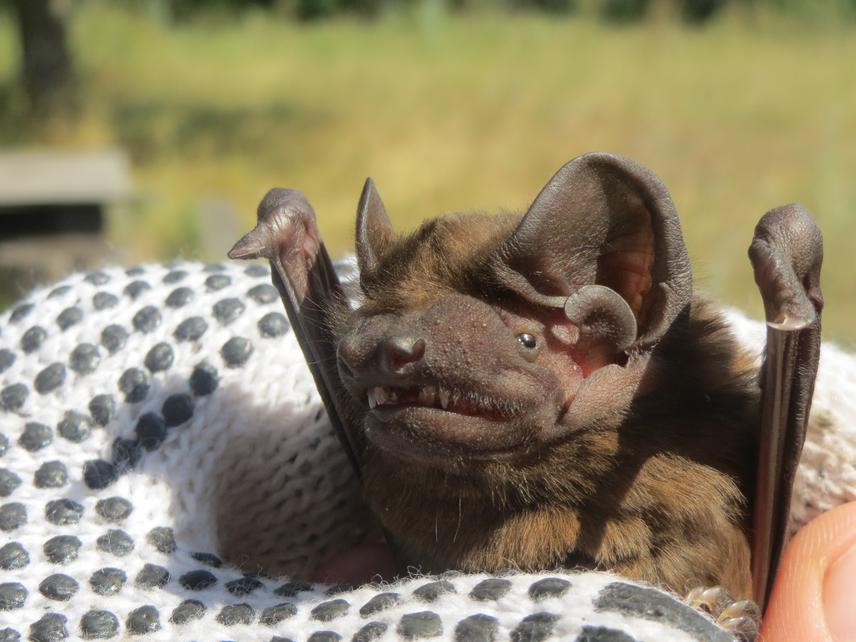Anton Vlaschenko
Other projects
6 Aug 2010
Nyctalus lasiopterus in Ukraine: Inventory of Current Status, Proposals to Revise the Species Status in IUCN Red List and Conservation
13 Feb 2017
Conservation and Monitoring of Nyctalus lasiopterus in the Eastern Part of the Species Distribution Range
The project could be estimated like successful after realization the following two objectives:
1) to check localities of Ukraine where Greater Noctule was found in past in Ukraine (5 loc.);
2) to study deeply the locality in Chernobyl Zone where Greater Noctule was found in 2009 (including study of roost sites).

This project is the second step of inventory of Greater Noctule (Nyctalus lasiopterus) of the Eastern part of the species range. The first step was realized in summer-autumn 2010-2011 we invented locations where the species was found in past (1930-1960th) in the North and the South of Ukraine. There was no Greater Noctule both mist-netting results and after analyzes of ultrasound records. On the base of results of inventory in Ukraine we can confirm that there were no known breeding centers of Greater Noctule there. We formulated three working hypotheses of possible causes of Greater Noctule disappearance, and compared our results and data of all-Europe literature review with IUCN criteria.
The species could be indeed evaluated as VU or yet EN, but after inventory of locations from the other part of the Eastern part of Greater Noctule range – Russia. There is single known breeding center of Greater Noctule in Samara bend in the East. There are 3-5 locations where the species was known in past (1950-1980th) in Russia. For testing our hypotheses and exact evaluation of Greater Noctule IUCN status we will do inventory work in European Russia.
The main idea (aim) of the project is to achieve the change the Greater Noctule IUCN status to highlight the problem of conservation of forest-dwelling-bats and old forests. Now two European bat species (Rhinolophus mehelyi and Myotis capaccinii) are evaluated as Vulnerable. These species are cave-dwelling-bats, and it is easier to estimate the status of such bats in comparison of forest-dwelling-bats. On this reason Greater Noctule is estimated unequal we think. One of our working hypothesis is the “Extinction debt” – oak forests were converted by human activity irretrievable (for Greater Noctule) in the beginning of the XX century yet, and records of Greater Noctule in 1930-50 were the remainder of breeding populations. Also, we don’t know what the other forest-dwelling bat species are in the queue of extinction debt. It could mean that we need in harder rule of forest cutting-management (especially in Ukraine and Russia) for stopped the forest habitat degradation. We want to get data on the type of tree-roost-cites of Greater Noctule, to estimate the forests where Greater Noctule will be find (square, tree species and age composition, history of management etc.), and to estimate the colony size and structure of Greater Noctule. There were no such data on Greater Noctule form the Eastern part of the range now. On this reason it is very difficult to understand why Greater Noctule disappeared, and what is the specific ecological requirement of Greater Noctule in compared to other species of genus Nyctalus. We want to achieve international collaboration between teams from different countries to research experience change and testing some hypotheses on Greater Noctule in field. Also we want to understand the degree of isolation of breeding population and to estimate the gene flow between the populations.